John Pickup Brings Don Quixote to the Australian Outback
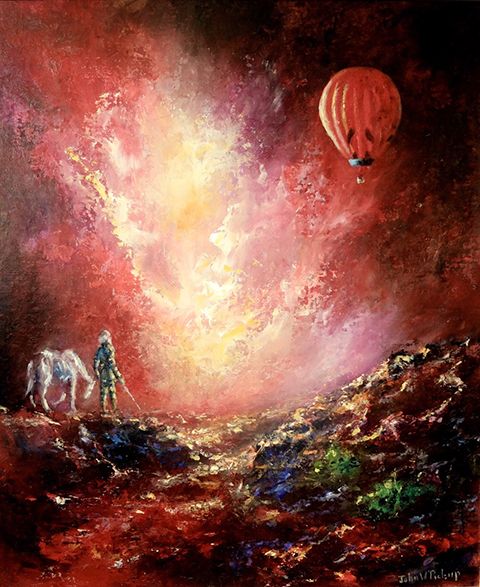
John Pickup often displays a whimsical perspective on life as seen in his series on Don Quixote. John, with his ingenious creativity, perceptualised this C17th Spanish character in Outback Australia. The title of the painting above is Don Quixote meets Don Quixote and as John was a balloon pilot I suspect there is a little of Don Quixote in him.
John Pickup is a story teller both verbally and visually. He told me that he was just taken with the idea of a Spanish Knight coming to the outback of Australia on his impossible quest and encountering everyday events. Through these works he explores how Don Quixote might appear and cope when faced with everyman situations. In Stop Don Quixote the fantastical Spanish knight experiences the frustrations we have all had when faced with the road worker holding the balance of power with his stop sign.

In John's words: Regarding Don Quixote, you were asking how the idea originated... I had been impressed with the story of Archbishop Witt who was responsible for the whole of the Northwest of Western Australia (sic), so I decided to depict him in full ecclesiastical regalia sitting on the local means of transport -a horse. Below is the painting John is referring to: Archbishop on a White Horse.
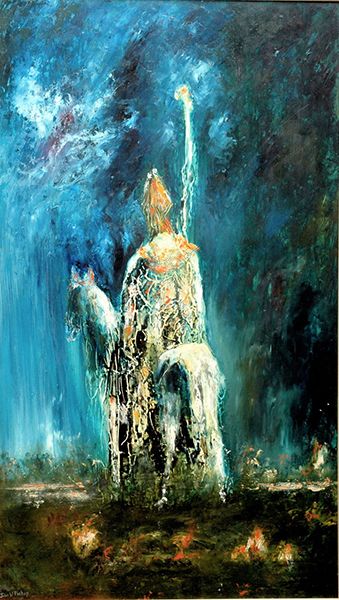
John continues: Somehow Archbishop Witt saw the painting reproduced somewhere and sent me a lovely letter which I really appreciated. When it was shown at an exhibition somebody commented to me that they thought it was Don Quixote and that's what set me thinking about bringing the old Spanish knight to one of the remotest part of the world: the Australian outback.
Don Quixote beneath the Southern Cross is seen beelow dreaming his impossible dreams beneath a desert sky brimming with quests: with trials, tribulations, and little triumphs.
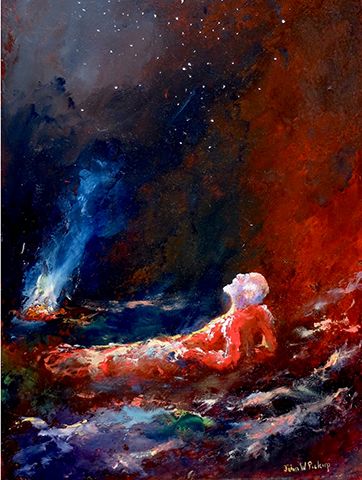
For those of you who aren’t aware of the story behind Don Quixote; he is the main character in the novel The Ingenious Gentleman Sir Quixote of La Mancha by Spanish writer Miguel de Cervantes written and published in two parts, in 1605 and 1615.
Don Quixote is the most influential work of literature from the Spanish Golden Age and considered to be the first modern novel. The story follows the adventures of a nobleman named Alonso Quixano who loses his sanity from reading too many stories about chivalry. Don Quixote goes off in search of impossible dreams - most of which are imaginary. He is a good and honest man and finally casts off his illusions and returns home to die.
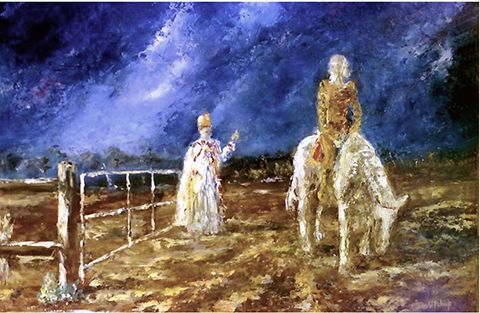
Don Quixote’s Vigil at the Opera House was created in memory of the visit made by the Brushmen of the Bush to Sydney. As John recounts: There had been a Brushmen Exhibition in Sydney and we were invited to join the audience prior to the opening of the Sydney Opera House for an acoustic check of the auditorium with the Sydney Symphony Orchestra who performed a complete night's concert. We were fortunate to have been in the right place at the right time, along with having some influential friends!
With this background John decided to explore how Don Quixote might have felt on such an occasion.

Don Quixote is a story about idealism versus materialism. It's about a man fighting his own weaknesses and inability to be the person he dreams he could become. He is funny, sad, tragic and John has captured the essence of this imaginary character’s human strengths and weakenesses which are of course present within all of us.
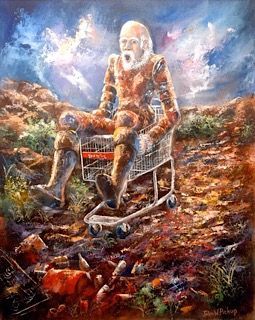
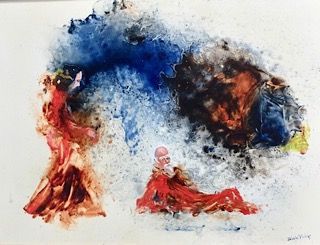
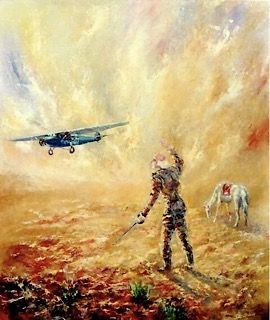
In Cervantes story, Don Quixote is not only engaged in finding illusory challenges, he is seeking to find his own true self.
And I have to tell you that John Pickup has a thing about shopping trolleys which as he says can be found all over the landscape- a feral animal that has populated our world.
Don Quixote Salutes the Southern Cross represents John's salute to aviation which has been as much a part of his life as has his painting. For many years he was a balloon pilot and a highly qualified glider pilot.
The Southern Cross is the name of the Fokker F.VIIb/3m trimotor monoplane that in 1928 was flown by Australian aviators Charles Kingsford Smith, Charles Ulm, Harry Lyon and James Warner in the first-ever trans-Pacific flight to Australia from the mainland United States, a distance of about 11,670 kilometres (7,250 miles). (en.wikipedia.org)
Today we will farewell Don Quixote as he contemplates The Dream Machine and maybe, just maybe he is considering the advantages and disadvantages of this vehicle over his beloved horse!
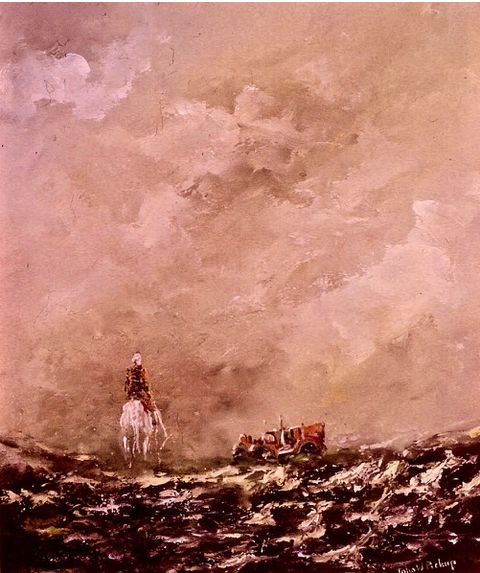
© Thank you to John Pickup who kindly gave permission for the images of his paintings to be shared on AnArt4Life.

